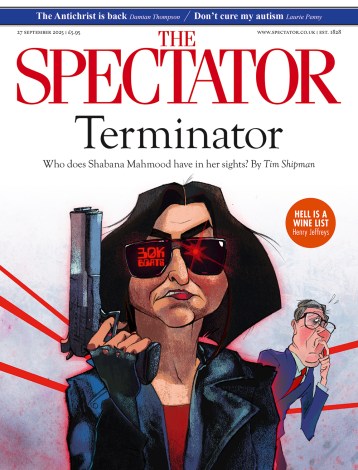 Ok, so Halloween isn’t until Friday. But I thought I’d post a list of favourite horror films now, so that – should you wish – you’ve got some chance to pick them up on DVD. Two things before I get onto the films. First, many of these aren’t actually scary. On the whole, I like my horror films from the 30s, 40s and 50s, when eeriness was the order of the day. And second: whilst I’d shy away from calling this a list of alternative horror classics – whether they’re “alternative” depends on the reader, not the choices – I have avoided the touchstones of screen horror. So there’s no room for Bride of Frankenstein (1931), The Horror of Dracula (1958) or Night of the Living Dead (1968); excellent though they may be. I guess you could call this an “If you liked those, you might want to try these…” selection:
Ok, so Halloween isn’t until Friday. But I thought I’d post a list of favourite horror films now, so that – should you wish – you’ve got some chance to pick them up on DVD. Two things before I get onto the films. First, many of these aren’t actually scary. On the whole, I like my horror films from the 30s, 40s and 50s, when eeriness was the order of the day. And second: whilst I’d shy away from calling this a list of alternative horror classics – whether they’re “alternative” depends on the reader, not the choices – I have avoided the touchstones of screen horror. So there’s no room for Bride of Frankenstein (1931), The Horror of Dracula (1958) or Night of the Living Dead (1968); excellent though they may be. I guess you could call this an “If you liked those, you might want to try these…” selection:
(Titles link through to DVD pages on Amazon. A couple of the films are only available from America)
The Lodger: A Story of the London Fog (Alfred Hitchcock, 1927)
Is there a more evocative subtitle in cinema than “A Story of the London Fog”? And how apt it is, too. In this early Hitchcock effort, a Jack the Ripper-esque figure is killing girls on the cobbled streets of London town. No-one knows for sure who it is, but suspicion falls on the eponymous lodger. Could it really be him? The Master of Suspense keeps us guessing until the very end. John Brahm’s 1944 retelling is also worth checking out.
The Man Who Laughs (Paul Leni, 1928)
Leni’s expressionist silent film retains much of the psychological angst of Victor Hugo’s novel. The main reason: Conrad Veidt’s central performance as the clown with a permanent grin literally carved on his face (pictured at the top of this post). Said to be an influence on Bob Kane when he created Batman’s nemesis, The Joker.
The Black Cat (Edgar G. Ulmer, 1934)
This – along with, say, The Old Dark House (1932) – is one the darker entries in the Universal horror cycle. Karloff, Lugosi, Satanism, human skinning and corpse-strewn, art deco sets: all contribute to the overriding sense of dread.
The Leopard Man (Jacques Tourneur, 1943)
My favourite pairing in horror cinema: producer Val Lewton and director Jacques Tourneur. They made three films together – Cat People (1942), I Walked with a Zombie (1943) and this, The Leopard Man (1943) – all of which blur the boundaries between the natural and the supernatural. Are the protagonists suffering from psychological complaints, or do things really go bump in the night? Tourneur would go on to develop this theme in his best film, Night of the Demon (1957).
Dead of Night (Alberto Calvacanti et al, 1945)
Perhaps the most atypical Ealing film, this portmanteau collection of five supernatural tales, directed by four separate directors – Alberto Cavalcanti, Charles Crichton, Basil Dearden and Robert Hamer – is also one of the studio’s finest achievements. The stand-out is Hamer’s segment, ‘The Haunted Mirror’. But the tales work better in each other’s company – forming the cinematic equivalent of ghost stories told around a camp fire.
Black Sunday / The Mask of Satan (Mario Bava, 1960)
Atmosphere, atmosphere, atmosphere – Mario Bava’s directorial debut drips with Gothic charm.
Eyes Without a Face (Georges Franju, 1960)
Lyrical, poetic, dreamlike – these are the adjectives that always crop up in any discussion of Franju’s work. And rightly so. His Eyes Without a Face – the sordid tale of a doctor trying to restore his daughter’s disfigured face – plays out like a delicate fairytale. Makes for a good double-bill with Franju’s Judex, released as part of Eureka’s indispensable Masters of Cinema DVD range.
The Gorgon (Terence Fisher, 1964)
Along with his The Curse of Frankenstein (1957); Horror of Dracula (1958) and The Brides of Dracula (1960), yet more evidence of why Terence Fisher was one of the most accomplished of all Twentieth Century British directors. Few can create such an appealing cocktail of adventure, drama, lurid themes and light-hearted japes. Throw in an effective monster – this time the snake-haired gorgon of Greek mythology – and you have an archetypal Hammer horror film.
The Masque of the Red Death (Roger Corman, 1964)
A delirious riot of colour, blood and period chills. This is what happens when the genre legends Roger Corman and Vincent Price collide with Edgar Allen Poe source material. The stunning cinematography comes courtesy of Nicholas Roeg.
Martin (George A. Romero, 1977)
This account of a teenage vampire (or is he?) in modern Pittsburgh is full of the same subversive wit that marks Romero’s superb zombie films – but remains altogether more ambiguous and elegiac.






Comments